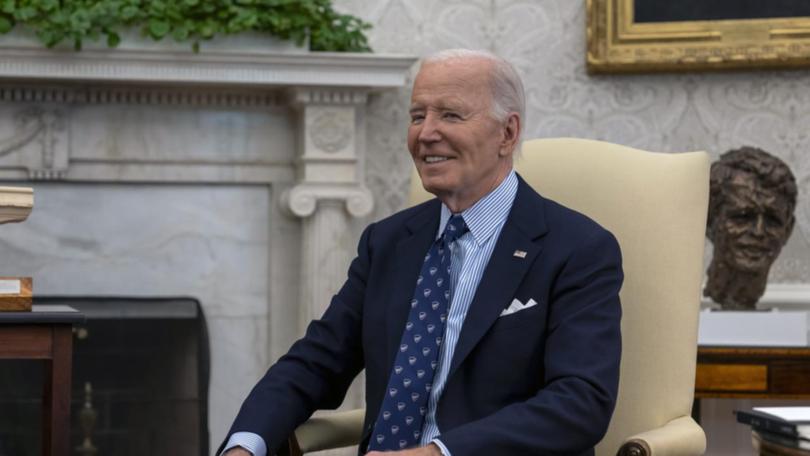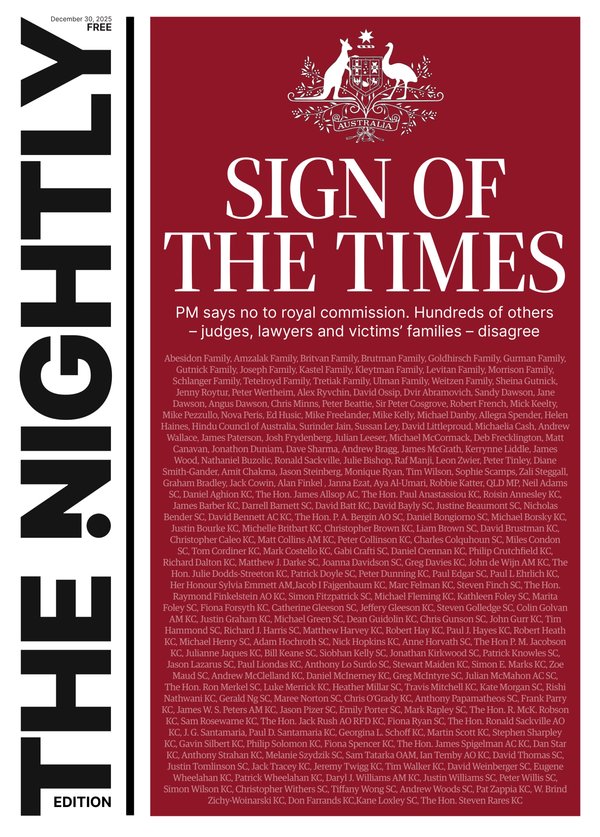THE NEW YORK TIMES: The Democratic blind spot that wrecked 2024

The 2022 election went better than Democrats could have hoped. The party picked up governor’s mansions and state legislatures and expanded their Senate majority. It held down losses in the House. The promised “red wave” never crashed ashore. Perhaps it would have been better if it had.
Looking back, the seeds of the Democrats’ 2024 wipeout were planted in the quasi-victory of 2022. Three things happened in the aftermath.
The pressure on President Joe Biden not to run for reelection, and the possibility of a serious primary challenge if he did run, evaporated. Democrats convinced themselves of a theory of the electorate that proved mistaken.
Sign up to The Nightly's newsletters.
Get the first look at the digital newspaper, curated daily stories and breaking headlines delivered to your inbox.
By continuing you agree to our Terms and Privacy Policy.As a result, the Biden-Harris administration avoided the kind of hard, post-defeat pivot that both the Clinton and Obama administrations were forced to make after the midterm defeats of 1994 and 2010.
In 2020, Democrats had worried over Biden’s age, but were comforted, in part, by the soft signals he sent that he would serve only one term.
“Look, I view myself as a bridge, not as anything else,” he said in 2020. By mid-2022, as Biden signalled his intention to run again, the party was growing alarmed. In June of that year, The New York Times interviewed nearly 50 Democratic officials and found that among “nearly all the Democrats interviewed, the president’s age — 79 now, 82 by the time the winner of the 2024 election is inaugurated — is a deep concern about his political viability.”
Nor was the public thrilled about the results the Biden administration was delivering. In October 2022, amid widespread anger over inflation, a Times-Siena College poll found Biden with a 38% job approval rating and trailing Trump in a hypothetical rematch.
If Democrats had been wiped out in the midterms, the pressure on Biden to be the transitional figure he’d promised to be would have been immense. If he’d run again despite that pressure, he might have faced serious challengers.
But Democrats fared far better than they had expected. The president’s saggy approval rating and the widespread anger at inflation were nowhere to be found in the election results.
In their first referendum under Biden, Democrats did much better than they had under Clinton or Obama. Any pressure on Biden to step aside — and any possibility of a real primary challenge — ended.
In its place, a new theory of the electorate emerged, based on the way Democrats over-performed in contested states, like Pennsylvania and Wisconsin, and underperformed in safe states, like New York and California.
There were two coalitions: the Make America Great Again coalition and the anti-MAGA coalition. The anti-MAGA coalition was bigger, but it needed to be activated by the threat of Donald Trump or the Dobbs abortion ruling.
A slew of special election victories in 2023 seemed to confirm the theory. Democrats were winning elections they had no business winning, given Biden’s low approval rating and public anger over inflation. But the anti-MAGA coalition’s hatred of Trump had changed the electoral math.
There was a less comforting explanation: Democrats were winning more politically engaged voters by huge margins, Republicans were winning voters with less day-to-day interest in politics.
The Democrats’ new coalition was the kind that turned out reliably in midterm and special elections. Perhaps that — not an anti-MAGA calvary — was behind Democrats’ strong showing. If this theory was right, a high-turnout presidential election might prove dangerous for Democrats because the electorate would fill with the voters who cared little about Trump or Jan. 6, 2021, but loathed high prices.

But Democrats largely came to believe the first theory. When I talked to some of Biden’s top political advisers after the midterms, they told me that the president’s approval rating was no longer an electoral indicator worth obsessing over. In a nation this sharply polarized, any president would be unpopular.
But that wasn’t a harbinger of electoral doom, so long as the alternative was even more unpopular. Democrats didn’t need to change voters’ minds about Biden so much as they needed to keep reminding them of the chaos and consequences of Trump. The 2024 election, they said, would be about Dobbs and democracy.
This permitted the Biden administration — or what would later be called “the Biden-Harris administration” — to avoid the pivot previous Democratic presidencies have followed after the midterms. In 1994 and 2010, Democrats suffered a “shellacking,” to use Barack Obama’s memorable term.
In both cases, the administration took the beating as a signal and refocused itself on the voters it had lost. This led, in Bill Clinton’s case, to “triangulation” and welfare reform; it led, in Obama’s case, to a sequence of bipartisan budget negotiations and a reelection campaign laser-focused on economics.
But the Biden administration wasn’t forced into that kind of pivot. It wasn’t blind to voter anger over inflation or the border, but it wasn’t stung by the kind of electoral rejection that forces administrations to alienate their core supporters by swinging to the center. There were no bipartisan negotiations over an anti-inflation or deficit reduction package and few highly public and painful efforts to change course. Biden remained preoccupied, understandably, by Ukraine and then Oct. 7, 2023, and the war between Israel and Hamas.
The most visible bid for moderation after the midterms was the administration’s endorsement of the Murphy-Lankford border bill. But the Biden administration didn’t engage in that process until the end of 2023, and Biden didn’t endorse the bill until January 2024. Even when the bill failed, Biden didn’t issue his executive actions constricting the asylum process until June of 2024.
Compare that with the Obama administration, which spent years working through splashy bipartisan negotiations — through the Simpson-Bowles Committee, with House Speaker John Boehner, then through the so-called “supercommittee.” These largely failed — in the end, deficit reduction was largely driven by the dumb cuts of the “sequestration” process — but the Obama administration let itself get caught trying again and again and again.
I was no fan of the Obama administration’s turn to deficit reduction. But then, I’m a liberal. The Obama administration didn’t need to win me back. After the disastrous 2010 midterms, it needed to win back voters who believed the administration was listening to me and not to them. It focused relentlessly on that project, even when it infuriated the Democratic base.
I think this dynamic helps explain a political blindness that Democrats developed around Biden. There was always a huge gap between the near reverence for Biden among Washington Democrats and Biden’s weak approval rating.

One reason Biden was so beloved among congressional liberals was that, unlike previous Democratic presidencies, his administration didn’t reorient its politics in a way that alienated its base in order to win back disaffected voters. There’s a reason Biden’s staunchest defenders, even after the disastrous presidential debate, were Sen. Bernie Sanders, I-Vt., and Rep. Alexandria Ocasio-Cortez, D-N.Y.
Instead of focusing on the voters they were losing, Biden and the Democrats kept focusing on the voters they were winning. Biden’s reelection campaign launched at Valley Forge with a speech on the threat Trump posed to democracy; Harris’ campaign made its closing argument at the Ellipse, in Washington, where Trump whipped up the mob that stormed the Capitol.
But the electorate of 2024 was not the electorate of 2022. It wasn’t sufficiently motivated by Dobbs and democracy. It’s been an electorally disastrous year for incumbents worldwide, and the depredations of Donald Trump did not make America an exception to the rule.
Perhaps if the Democrats had felt the full force of voter fury in the midterms, they would have spent the intervening two years doing everything in their power to quell it, or finding a candidate who could answer it.
But they didn’t. By the time Harris took over the campaign in July, with barely 100 days left before Election Day, it was too late.
This article originally appeared in The New York Times.
© 2024 The New York Times Company
Originally published on The New York Times
